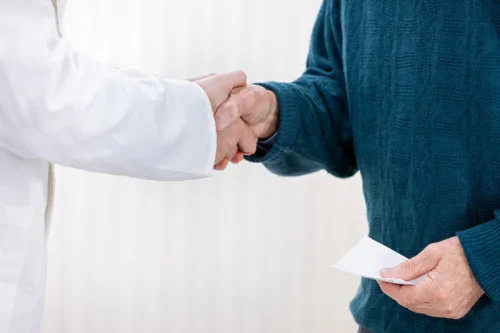What does alcohol consumption actually do to the heart?

Individuals who have higher levels of social support and community cohesion generally are thought to be healthier because they have better links to basic health information, better access to health services, and greater financial support with medical costs. One of the most challenging problems facing alcohol researchers is understanding why some individuals develop AUD. Major theories on the etiology (i.e., causes) of AUD have focused on intrapersonal (e.g., personality traits) and interpersonal (e.g., peer influence) factors that contribute to the development of pathological alcohol use (Sher et al., 2005). This review focuses on a critical but relatively understudied interpersonal factor in alcoholism etiology—the importance of considering whether alcohol consumption occurs in social versus solitary settings. Although most social drinkers don’t become alcoholics, there are risks involved.
Scientists Just Debunked Decades of Research About Alcohol Consumption

Other concerns with studies examining alcohol and positive emotion mirror limitations noted by Wilson when critiquing TRT research. To wit, many prior studies have neglected to include appropriate beverage control conditions to account for both the potential pharmacological and dosage-set effects of alcohol (for elaboration on dosage-set methods and findings, see Martin & Sayette, 1993). In addition, past studies have tended to rely too heavily on self-report measures of emotion, neglecting comprehensive, multimodal assessments. In sum, the attention-allocation model has inspired multiple replications of the core finding that in the presence of concurrent distraction, a moderate dose of alcohol will reduce self-reported anxiety. Because most of the drinking that occurs in the real world includes distractions, a major attraction of the attention-allocation model is that it provides a mechanism to explain why alcohol often will provide anxiolytic effects (Josephs & Steele, 1990).
- Although being a social drinker is accepted in society, it’s easy to slip into alcohol dependence over time.
- One notable policy is the establishment of the Minimum Legal Drinking Age (MLDA) to 21, which has been linked to reductions in fatal car crashes and long-term differences in drinking outcomes among young adults.
- The host sits down and takes the [wine] cup from the tray and descends to wash.
- Unfortunately, micro-analytic facial coding of such large, multimillion-frame databases using human coders is admittedly a prohibitive endeavor, which likely has discouraged this sort of measurement in the past.
Am I An Alcoholic Or Social Drinker?
Yet complete dismissal of dosage-set effects of drinking may be premature, especially as interest in placebo responding in general has arisen in other areas of science and medicine (Kirsch, 1999). Research indicates that placebo beverages can lead individuals to draw upon greater cognitive resources, and in some cases improve performance (Bailey, Bartholow, Saults, & Lust, 2014; Marczinski & Fillmore, 2005; Saults et al., 2007; Vogle-Sprott & Fillmore, 1999). In addition, nonpharmacological drinking factors still occasionally appear to affect social behavior (Hull & Bond, 1986; Sayette, Dimoff, Levine, Moreland, & Votruba-Drzal, 2012b), and research is needed to evaluate how expectancies related to drinking may affect group processes. Work by Goldman et al. (e.g., Moltisanti, Below, Brandon, & Goldman, 2013) has begun to examine the impact of alcohol expectancy primes on social bonding. Part of the challenge in this realm is that researchers have run up against methodological obstacles regarding just what can and cannot be controlled for in a placebo beverage (see Martin & Sayette, 1993). Consideration of alternative (including implicit) approaches to assessing dosage-set may be useful.
- This model proposes that alcohol creates a myopic focus on the present moment, thereby limiting the degree to which present experiences are influenced by emotions derived from prior experience (Fairbairn & Sayette, 2013).
- I started swimming at the local pool three times a week with a friend which further lifted my mood.
- It is important to understand the difference between social drinking and alcohol abuse because heavy drinking can come with multiple side effects and consequences.
- Dr Amen also highlighted that saying negative things to their partner or children after a drink is one of the more serious signs of problematic drinking, adding that it’s a sign you may be on the way to developing an addiction.
What are Signs That Social Drinking Has Become Problem Drinking?
Last year, when Moudachirou and his family saw Circus Smirkus, the show was at Payson Park in Portland. But this year, the presenter of the Portland-area shows, Portland Ovations, picked the Cumberland Fairgrounds to provide more parking and a better site for the giant tent, which holds 750 people. The Vermont-based family circus will stage shows in Cumberland, Kennebunkport and Fryeburg. Some of the aches and pains social drinking and drinking problem he put down to aging were alleviated after ditching drinking. Jonathan then said he ‘made a deal with myself that I couldn’t drink more than half the days of the year’, but it didn’t work as he found reasons to get around it. “Shakes, sweats, nightmares, insomnia for the first week. I never thought I was at that point in my drinking, it’s like it creeped up on me, a real withdrawal that I’d never seen coming.”
What are the Warning Signs of Alcoholism?
- Global patterns reveal that higher-risk drinking is most prevalent among men in their early twenties in high-income countries, followed by a decline in older age groups.
- Alcohol is a powerful drug that can lead to addiction and severe health problems which require medical detox.
- Alcohol administration paradigms combined with EMA protocols that assess social and solitary drinkers in real-time and over a long enough timeframe to detect the development of AUD symptoms would help establish the necessary directional and causal relationships presented in Figure 1.
- The harmful effects of alcohol misuse are far reaching and range from accidents and injuries to disease and death, as well as consequences for family, friends, and the larger society.
- Several mediators have been proposed to explain alcohol’s effects on emotion, including some that stem directly from the various models discussed earlier when addressing TRT (see Sayette et al., 2016 for elaboration).
For most people who relapse, it can take years to find recovery again, and many never make it back. However, if you engage in social drinking multiple times a week, this can give way to increased tolerance and a desire to drink more. In summary, the group formation project offered a platform by which to evaluate the complex relationship between alcohol and emotion in a social context. Thus far, the research has investigated underlying mechanisms such as emotional inertia and emotional contagion, as well as the moderating role of gender, genes, and personality. The studies suggest that certain individuals are particularly sensitive to alcohol’s socially reinforcing effects and possibly for different reasons.
Risk factors

If you are a female, the definition is 8 or more alcoholic beverages in one week and 4 alcoholic drinks per occasion. Under stressful circumstances, some may feel the urge to drink—or even participate in virtual cocktail hours with their telecommuting coworkers—when boredom or tension strikes. https://ecosoberhouse.com/ Turning to alcohol or other drugs during times of stress is a common—but maladaptive—coping mechanism. In a study reported in the American Journal of Epidemiology, there was an almost 25 percent increase in alcohol consumption in the weeks following the 9/11 terrorist attacks.

Psychiatrist says you have a ‘problem’ with alcohol if you feel like this after drinking

